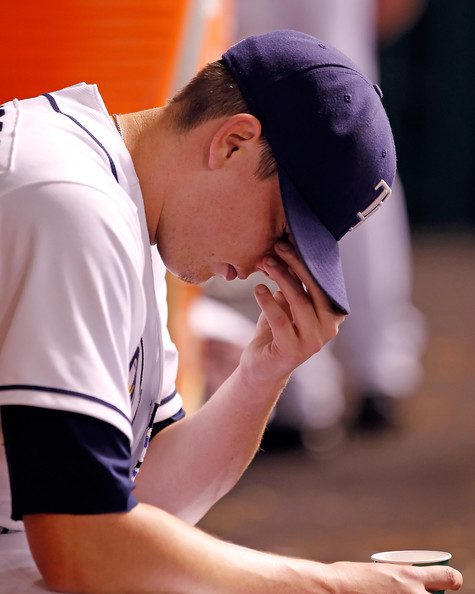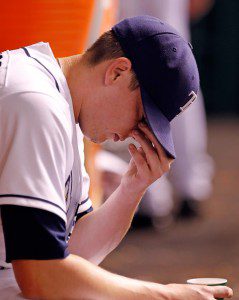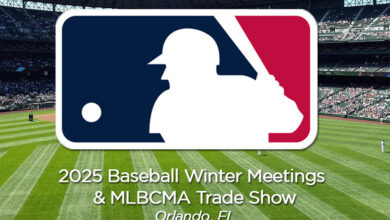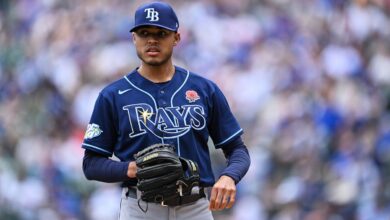

I never played fantasy baseball during the height of the steroid era. I assume it was a lot harder back then, trying to get five starting pitchers in the draft who did not end up getting posterized by Mark McGwire, Sammy Sosa or Barry Bonds. Nowadays, we are in a pitching-era boom. I can wait until the eighth or ninth round before worrying about a starting pitcher because the position is super deep. Regardless of the depth, we still want to evaluate the position with sabermetrics to find value in the position and avoid players who will hurt our chances of winning. So, I give you BABIP and xFIP
BABIP is a statistic measuring the percentage of plate appearances ending with a batted ball in play (excluding home runs) for which the batter is credited with a hit. BABIP is commonly used as a red flag in sabermetric analysis, as a consistently high or low BABIP is hard to maintain – much more so for pitchers than hitters (a normal BABIP is around .300). Therefore, BABIP can be used to spot fluky seasons by pitchers. As with other statistical measures, pitchers whose BABIPs are extremely high often can be expected to improve in the following season, while pitchers whose BABIPs are extremely low can often be expected to regress in the following season. Team fielding must also be taken into the equation. A pitcher’s BABIP can be as high as 0.315 with bad fielding defense behind him.
xFIP is used to calculate future ERAs of pitchers. xFIP favors pitchers with a HR/FB rate less than 10.6% and has the highest correlation with the future ERA out of all the pitching metrics. So, if we go back and look at a player’s BABIP and xFIP, we might be able to see a trend that may make us shy away from certain pitchers and find value in others.
Let’s look at pitchers with high xFIP and low BABIP. This should give us a list of players who will continue to have a high ERA, and if their BABIP rises to the mean (.300), they should have a worse season than they had last year.
| High xFIP, low BABIP | |||||||
|
Name |
K/9 |
BB/9 |
HR/9 |
BABIP |
HR/FB |
ERA |
xFIP |
|
5.14 |
3.08 |
1.13 |
0.280 |
8.80% |
4.45 |
4.82 |
|
|
5.57 |
3.43 |
1.00 |
0.223 |
8.10% |
2.95 |
4.72 |
|
|
4.88 |
2.04 |
2.08 |
0.278 |
15.90% |
5.07 |
4.54 |
|
|
5.62 |
2.86 |
1.12 |
0.284 |
9.70% |
4.33 |
4.47 |
|
|
5.68 |
2.80 |
0.97 |
0.286 |
8.60% |
3.69 |
4.46 |
|
|
5.87 |
2.64 |
0.99 |
0.285 |
7.70% |
4.25 |
4.45 |
|
|
4.58 |
2.84 |
1.23 |
0.271 |
12.40% |
3.69 |
4.38 |
|
|
5.20 |
2.86 |
1.05 |
0.291 |
13.00% |
5.25 |
4.17 |
|
|
5.33 |
3.10 |
0.71 |
0.283 |
8.40% |
3.70 |
4.16 |
|
|
7.59 |
2.52 |
1.57 |
0.265 |
11.90% |
4.40 |
4.10 |
|
|
5.82 |
2.82 |
1.05 |
0.275 |
11.50% |
4.68 |
4.05 |
|
|
5.30 |
2.01 |
0.76 |
0.269 |
7.20% |
3.39 |
4.04 |
|
|
7.38 |
2.38 |
1.31 |
0.260 |
10.60% |
3.97 |
4.03 |
|
|
4.84 |
1.14 |
1.31 |
0.253 |
11.10% |
4.25 |
4.03 |
|
|
5.38 |
2.77 |
0.61 |
0.286 |
7.50% |
3.66 |
4.03 |
|
|
5.32 |
1.83 |
1.22 |
0.275 |
11.50% |
3.38 |
4.00 |
The big name people love on this list that jumps out to me is Hellickson. His ERA (2.95) does not match up with his xFIP (4.72), which is a huge red flag. Now lets throw in his BABIP, which is 0.223. That is insane! Even if the Rays had the best fielding percentage last season (.998), it still does not account for his super-low BABIP. People are going to call his bad 2012 season a “sophomore slump.” Those people are idiots. Avoid this guy and players like him on this list.
Guys who scare me off: Hellickson, Davis, Guthrie, Lohse, Maholm
Value Picks: Saunders
Now, lets look at guys with low xFIP and high BABIP. This should give us a list of players who should continue to have a low ERA, and if their BABIP comes down, improve upon the season they already had.
| Low xFIP, high BABIP | |||||||
|
Name |
K/9 |
BB/9 |
HR/9 |
BABIP |
HR/FB |
ERA |
xFIP |
|
10.54 |
2.36 |
1.00 |
0.318 |
13.60% |
3.83 |
2.56 |
|
|
8.72 |
2.31 |
0.64 |
0.318 |
8.40% |
3.00 |
3.02 |
|
|
8.40 |
2.02 |
0.53 |
0.322 |
6.20% |
3.21 |
3.10 |
|
|
8.55 |
2.58 |
0.73 |
0.307 |
9.50% |
3.47 |
3.15 |
|
|
8.95 |
2.86 |
0.64 |
0.306 |
7.70% |
3.32 |
3.19 |
|
|
9.26 |
2.93 |
0.92 |
0.31 |
10.40% |
3.67 |
3.25 |
|
|
7.24 |
2.09 |
0.61 |
0.312 |
7.50% |
3.45 |
3.31 |
|
|
7.21 |
2.31 |
0.69 |
0.318 |
8.90% |
3.56 |
3.31 |
|
|
6.47 |
1.92 |
0.87 |
0.331 |
9.50% |
4.67 |
3.55 |
|
|
7.39 |
2.19 |
1.15 |
0.305 |
11.40% |
4.00 |
3.57 |
|
|
6.36 |
2.66 |
1.25 |
0.310 |
15.50% |
4.89 |
3.64 |
|
|
6.58 |
2.71 |
0.46 |
0.302 |
6.30% |
3.21 |
3.64 |
|
|
6.59 |
3.37 |
0.67 |
0.327 |
10.20% |
5.05 |
3.65 |
|
|
8.03 |
2.58 |
1.34 |
0.314 |
12.60% |
4.43 |
3.70 |
|
|
8.50 |
3.65 |
1.02 |
0.324 |
11.20% |
4.80 |
3.70 |
|
|
8.60 |
3.73 |
0.81 |
0.314 |
9.30% |
4.68 |
3.71 |
The guy that jumps out at me right off the bat is Greinke. His xFIP (2.56) is higher than his ERA (3.83), which means his ERA should come way down. His BABIP (0.318) is above the statistical mean, which is partly because the Brewers rank in the bottom third in terms of team defense; however, with Prince Fielder gone, their team defense should get better. And as crazy as it sounds, Greinke may be a very good value pick at where you draft him.
I bet you are looking at Lowe and thinking, “What about that guy?” It’s okay, I did the same thing. Lowe went from one of the top fielding teams (the Braves), to one of the worst (the Indians). So while last season his BABIP was actually high, it will more than likely remain there this season. Same thing for Ubaldo; however, I would expect Ubaldo’s ERA to drop more since his xFIP is lower, and he actually pitched in the AL, whereas Lowe was in the NL the entire year.
Value Picks: Greinke, Bumgarner, Sanchez, Nolasco, Volstad
The final area I want to sort is high BABIP and try to find some value there. I tried to exclude guys who have no fantasy value and guys who were already on the lists above.
| High BABIP | |||||||
| Name | K/9 | BB/9 | HR/9 | BABIP | HR/FB | ERA | xFIP |
| Mike Minor | 8.38 | 3.27 | 0.76 | 0.350 | 8.00% | 4.14 | 3.62 |
| Jonathon Niese | 7.89 | 2.52 | 0.80 | 0.333 | 10.40% | 4.40 | 3.28 |
| Edwin Jackson | 6.67 | 2.79 | 0.72 | 0.330 | 8.20% | 3.79 | 3.73 |
| Brian Duensing | 6.40 | 2.89 | 1.17 | 0.330 | 11.10% | 5.23 | 4.05 |
| Danny Duffy | 7.43 | 4.36 | 1.28 | 0.329 | 11.50% | 5.64 | 4.53 |
| Travis Wood | 6.45 | 3.40 | 0.85 | 0.324 | 6.70% | 4.84 | 4.61 |
| Ryan Dempster | 8.50 | 3.65 | 1.02 | 0.324 | 11.20% | 4.80 | 3.70 |
| Joel Pineiro | 3.83 | 2.35 | 0.99 | 0.324 | 10.00% | 5.13 | 4.38 |
| Jaime Garcia | 7.21 | 2.31 | 0.69 | 0.318 | 8.90% | 3.56 | 3.31 |
| Nick Blackburn | 4.61 | 3.28 | 1.15 | 0.317 | 14.10% | 4.49 | 4.32 |
| Jake Peavy | 7.66 | 1.93 | 0.81 | 0.317 | 7.60% | 4.92 | 3.52 |
| Alfredo Simon | 6.46 | 3.11 | 1.17 | 0.317 | 10.90% | 4.90 | 4.23 |
| Jeff Francis | 4.48 | 1.92 | 0.93 | 0.316 | 8.50% | 4.82 | 4.29 |
| Rick Porcello | 5.14 | 2.27 | 0.89 | 0.316 | 9.90% | 4.75 | 4.02 |
| Livan Hernandez | 5.08 | 2.36 | 0.82 | 0.313 | 7.60% | 4.47 | 4.28 |
| Brandon Beachy | 10.74 | 2.92 | 1.02 | 0.307 | 9.80% | 3.68 | 3.16 |
| Chad Billingsley | 7.28 | 4.02 | 0.67 | 0.306 | 7.30% | 4.21 | 4.14 |
Again, off the bat, Minor jumps right out at me. His xFIP is lower than his ERA, and his BABIP is insanely high. Remember, the Braves had one of the best fielding defenses last season, so if Minor actually makes the rotation (he is slated for the fifth spot), he could be a very nice sleeper.
Another guy I like as a sleeper from this list is Danny Duffy. Kansas City had the 15th-best fielding percentage team, and that means Duffy’s BABIP should go down and his xFIP is way lower than his ERA. Duffy is not going to be an All-Star, but he could be a nice, late-round grab.
Value Picks: Minor, Jackson, Duffy, Francis, Beachy





